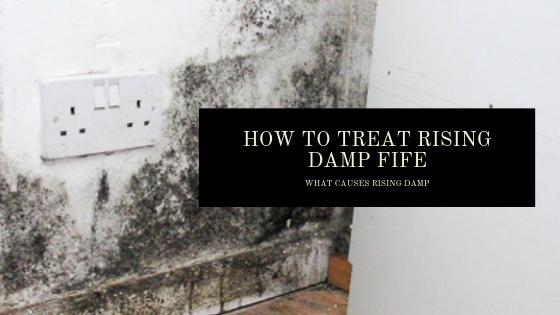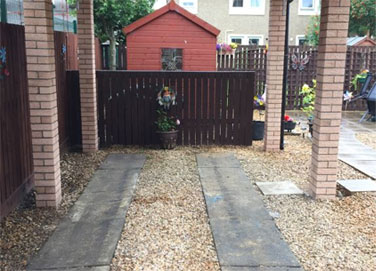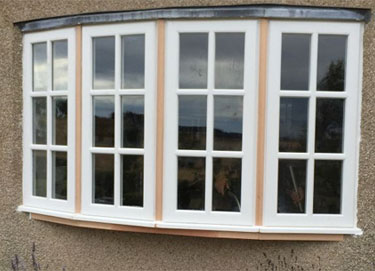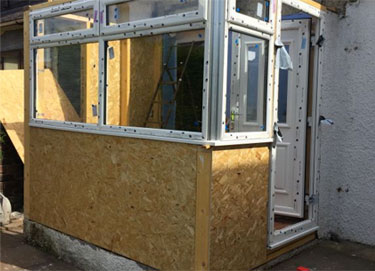How to Treat Rising Damp Fife – What Is Rising Damp?
Rising damp is moisture present in your walls as a result of water in the ground underneath or next to your walls rising up through the fabric of the wall, whether it be brick, block or stone.
The water travels upwards through the wall as a result of capillary action (where water is sucked through a small opening such as a tube or hole) through the tiny holes in the brick or stone.
The water stops rising at a height where gravity counteracts the upwards force of the capillary action.
This ‘rising damp’ usually reaches a maximum height of 1.2m, but the effects of the damp, such as salt deposits, may be seen higher up due to the presence of non-breathing wall coverings such as vinyl wallpaper and non breathing plasters, renders and paints.
Related content:
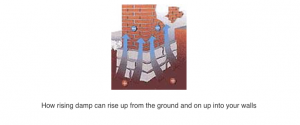
What Are The Signs Of Rising Damp in Fife?
Typical signs of rising damp rather than other damp problems are a ‘tide line’ of yellowish or brownish staining or blown plaster in the lower area of your wall above your skirting board.
You also might have damp or rotting skirting boards or flooring.
You may see white, fluffy deposits in your plaster – these are ‘salts’ which the damp has washed out of your bricks and into your plaster.
Black spots of mould may also appear on on the damp areas of your wall.
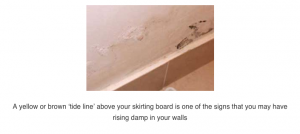
What Causes Rising Damp in Fife?
Rising damp problems often occur as a result of not having a Damp Proof Course installed or having a Damp Proof Course that is faulty due to age or inadequate installation.
A Damp Proof Course is a waterproof layer in your wall (or both walls if you have a cavity wall), ideally about six inches from the outside ground on your external wall and under your raised timber floor or near your concrete floor on your internal wall (so both DPC’s are on the same level).
This layer repels water – a variety of different DPC’s are available and will be discussed in this project.
You may be experiencing rising damp even if your Damp Proof Course is functioning well –in this case the DPC may be breached – that is, there may be something attached to your walls that is allowing water to travel around the Damp Proof Course and continue moving upwards.
It may be that there is an area of ground next to your external wall that is higher than your DPC, or there is an outside structure (such as steps) which is attached above the DPC, allowing water to travel up through this and cross to the wall over the DPC.
There are several other ways your DPC might be bridged.
Your internal plaster may be directly connected to a solid floor at the bottom on your internal wall.
Your cavity wall may also have debris inside of it, whether it is leftover building materials or something else.
If this debris reaches above the DPC’s then this can create another bridge for moisture to travel from the ground over the DPC and up your wall as rising damp.
NOTE: Remember that your damp problem may not necessarily be caused by rising damp – there may be another source of water that you are not aware of. A telltale sign that your damp is not rising damp is if the damp patches are higher up than 1 metre on your wall and are unevenly distributed, in which case you may be suffering from penetrating dampness instead.
How Can I Find Out What is Causing My Rising Damp in Fife?
If, at any point during the diagnosis process you feel that you need some additional insight or advice please give LC Joinery a call on 01592 747047.
They will be able to offer you assistance free of charge.
You should first check that you have a Damp Proof Course – this will usually be visible outside your house as a line 6 inches above the ground.
If you do have a DPC, check that there are no structures bridging your DPC – examples include higher outside ground or outside steps that are higher than your DPC and internal plaster that directly meets a solid floor.
The rising damp could also be coming in from a neighbour’s property if they don’t have a DPC or their DPC is higher up than yours, allowing the damp to travel around your DPC.
You can check for this by removing some of the bricks on your external wall (don’t remove more than two bricks without consulting a tradesman or surveyor). Using a phone with a light or a camera, take a look around the cavity.
How To Treat Rising Damp Fife
Carrying out a quick-fix for rising damp, (e.g. repointing or painting over the damp) will just make the job more expensive in the long term and will mean you need to do the job all over again at a later date.
If you’ve established that your rising damp is caused by a blocked cavity wall, unblock your cavity as described in the section above.
If you know that your Damp Proof Course is bridged in another way, such as by high outside ground, try to remove or adjust whatever’s causing the bridge so that it only reaches below the DPC, i.e. digging a trench that’s six inches deep by your house if your Damp Proof Course is buried in the ground currently.
In this case, make sure that water doesn’t pool in the ditch you’ve created, as this will cause its own damp problems.
If you can’t remove the object breaching your DPC or you have an absent or faulty DPC , the best way of treating your rising damp is to damp proof – in other words, to install a new Damp Proof Course in your walls.
This can be the first DPC your house has had or installing one above your existing one – if you have a structure breaching your DPC that you can’t move, you’ll need to install a new DPC above the structure instead.

